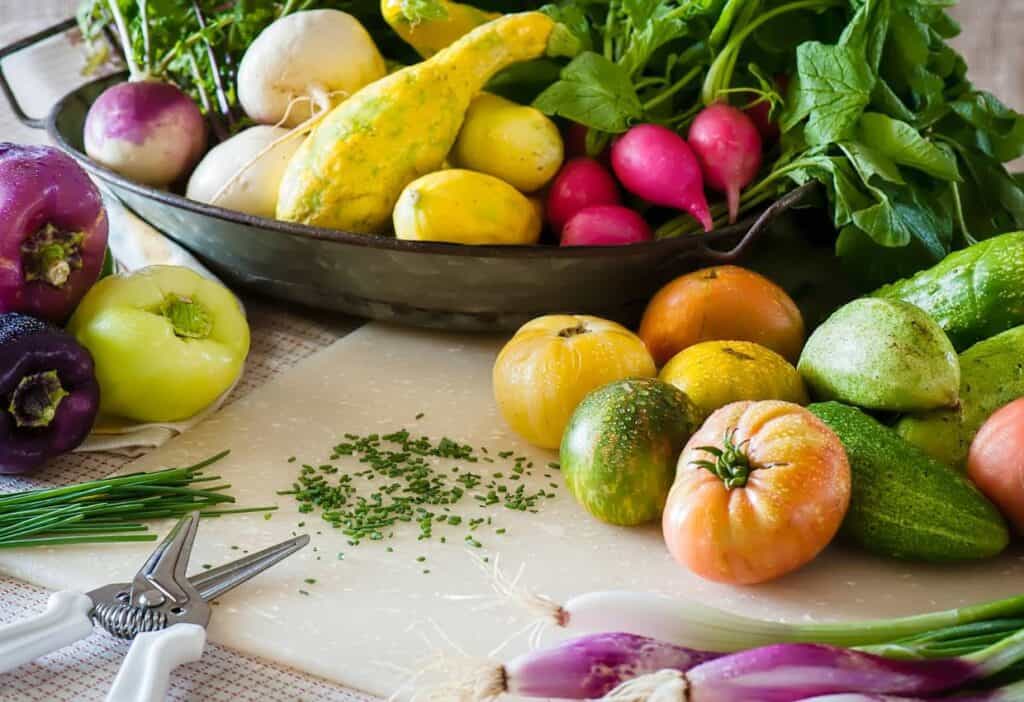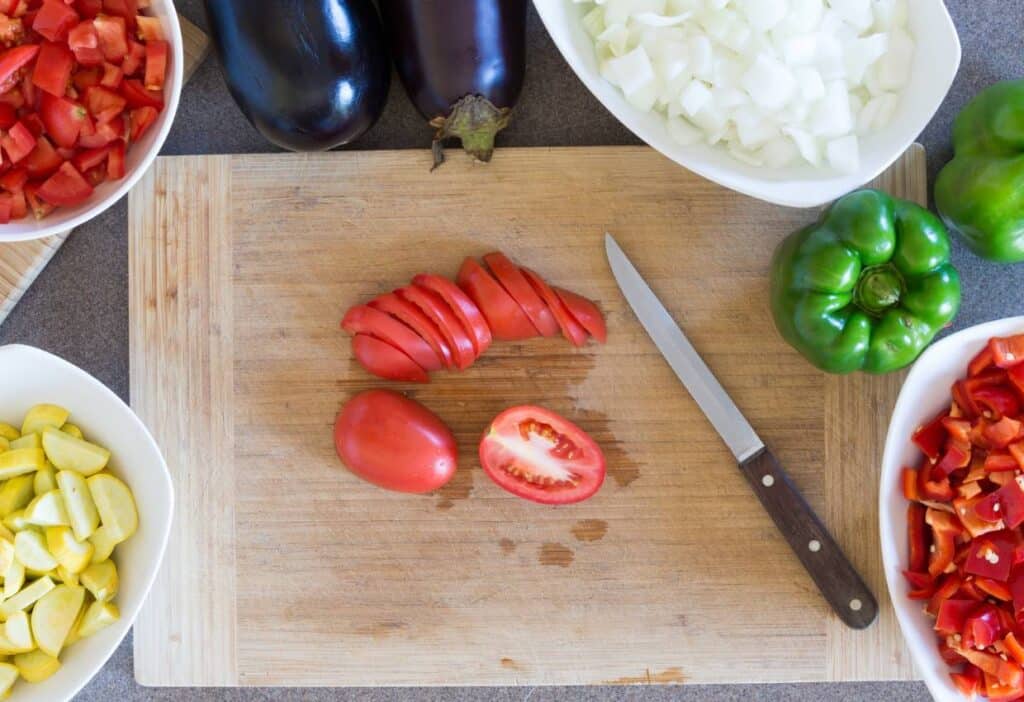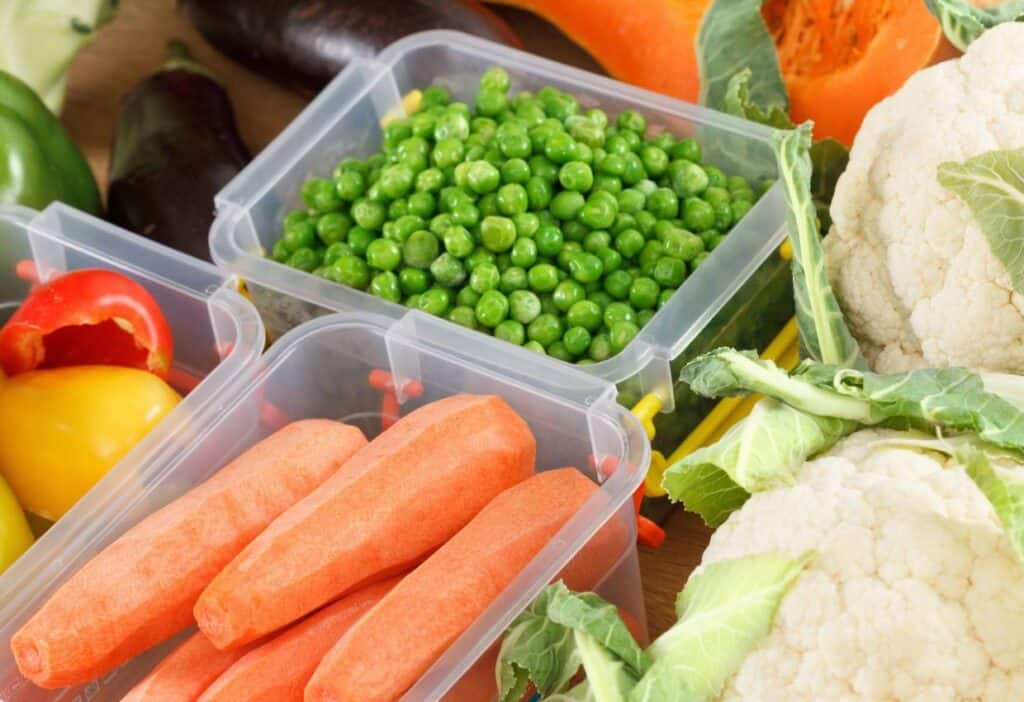In today’s hectic world, a weekly plan for meal-prepping vegetables can help save time and money. It can help foster a healthy family, ease budget strains and curtail excess kitchen waste from spoiled vegetables.

Creating a routine of meal-prepping vegetables can help lay the cornerstone for a balanced family diet and a manageable grocery budget. Busy parents juggling numerous roles may find convenient prepackaged and fast foods lure them towards less healthy, more expensive food options.
Yet, with some planning and effort once a week, the route to nutritious meals and snacks becomes easier. And this may set you on the path toward a healthier family, a lighter budget, and a more sustainable lifestyle.
Benefits of meal-prepping vegetables
Washing, cutting and storing your vegetables before you need them offers various benefits to your household. Here are four reasons to start.
Saves time
A stash of ready-to-go vegetables can significantly reduce meal preparation time during hectic weekdays. Invest a few hours one day to save time throughout the week, making weekday evenings less stressful and more enjoyable.
Saves money
Buying and prepping vegetables in bulk saves money in the long run. Store your veggies in budget-friendly storage containers so it’s easy to curb the temptation to order takeout or opt for prepackaged, processed foods, which are often more expensive and less healthy.
The USDA projects food prices will rise by 5.8% yearly. American households must either increase their food budgets or find ways to cut their food costs.
Easier to eat healthy
With prepped vegetables at hand, adding more greens into meals requires less effort, promoting a balanced diet. It’s a simple way to boost the family’s vegetable intake and foster healthier eating habits.
Reduces food waste
Meal prepping minimizes food spoilage and waste, aligning with a more sustainable living. It encourages using every bit of purchased produce, which is both eco-friendly and budget-friendly.
How to start meal-prepping vegetables

FDL’S 75 Best Bites

Our cookbook with 75 tasty recipes will be your go-to kitchen companion for easy dinners with ad-free recipes right at your fingertips. Crafted by experienced chefs and recipe developers, this collection offers a treasure trove of tried-and-true dishes that make mealtime a breeze.
Get the Recipe: FDL’S 75 Best Bites
Successful meal prepping takes some planning. Use these tips for success.
Buy on sale
Watch for sales on fresh or frozen vegetables. Get in the habit of meal planning with sales flyers to create meals around vegetables on sale.
Visit local big box stores to buy in bulk. Stock up on staple frozen vegetables for soups, stews and casseroles.
Buy in season
If you plan to prep and serve your family more fresh, raw vegetables, buy them locally when they’re in season. Visit farmers markets, the fresh produce section of your supermarket or grow your own potager garden.
Meal prepping fresh vegetables to serve raw in salads or with dip is easy. Just wash, slice and serve — no cooking required.
“My favorite meal-prepping vegetable is carrots because their vibrant orange color and natural sweetness add flavor to every dish. They’re a cost-effective ingredient that helps me create delicious and budget-friendly meals.”
— Cindy Gordon, Happy Food, Healthy Life
Preserve vegetables
Preparing vegetables to serve through the year can help your family get nutritious veggies even when they aren’t in season. Try canned, preserved and dehydrated meals and snacks to see which options your household most enjoys.
Batch prep your veggies
Minimize the time required to prep vegetables by scheduling once-a-week veggie prep sessions to support your weekly meal planning. For example, wash and slice all the onions that you bought on sale. Then, portion them into one-cup portions to freeze or dehydrate.
Raw veggies snack packs
Once a week, create snack packs of fresh veggies for your family to save time when making lunches and snacks for school or work. This way, you can grab one pack of prepared veggies each evening. Try a combination of celery, carrots and raw broccoli.
Invest in good-quality storage containers
Invest in airtight containers, zip-top bags and glass jars that keep prepped vegetables fresh. Quality containers are a worthy investment as they keep vegetables fresh for longer, reducing waste.
Vary prepping techniques
Explore different preparation methods such as chopping, dicing, blanching, roasting or even fermenting vegetables to cater to diverse meal plans. Each technique can bring out unique flavors and textures, making meals more enjoyable. Mixing prepping methods keeps meals interesting and caters to different tastes and textures.
Involve the family
Make meal prepping a family activity. It’s a fun way to spend time together, lighten the workload and instill healthy eating habits early on.
Common mistakes when meal-prepping vegetables

Ready to try your hand at prepping vegetables for next week’s meals? Before you start, learn the common mistakes to avoid and what to do instead.
Over-prepping
Avoid prepping more vegetables than can be consumed before they spoil. Start with a slightly smaller amount than you’ll need and prepare more the next time if needed.
Improper storage
Use the right storage method for your vegetables. For example, store long-shelf-life root vegetables in a cool, dry place and in proper containers to maintain freshness. Improper storage can lead to premature spoilage.
Lack of variety
Include a variety of vegetables to prevent meal fatigue and ensure a balanced nutrient intake. Experiment with different veggies each week to keep meals exciting and nutritious.
Wrong vegetables, wrong season
When prepping veggies before a meal, select versatile vegetables with a longer shelf-life post-prepping, like carrots, bell peppers and broccoli. These vegetables act as workhorses in various meals throughout the week.
“Choose the right vegetables! Some vegetables, like spinach or other leafy greens, wilt quickly, so it’s better to prepare them before eating. Others, like root vegetables and cruciferous veggies, are the best for meal prepping. Cut them into as even sizes as possible so they cook evenly.”
— Shruthi Baskaran-Makanju, Urban Farmie
At first, meal prepping for the week ahead may seem difficult. However, the many benefits of starting a meal-prepping routine are worth the effort.
Use simple strategies like buying on sale, in bulk and in season. Avoid common mistakes like overprepping and transform chaotic weeknight meals into a relaxing and enjoyable family time. The benefits of prepping vegetables for meals ahead of time ripple extends beyond the meal itself, helping to meet goals of a budget-friendly, healthy and eco-conscious lifestyle.
Sarita Harbour is a homeschooling, homesteading mom and a long-time business and finance writer. She created An Off Grid Life to help people become more self-reliant. Sarita and her family live off the grid in Canada’s Northwest Territories.